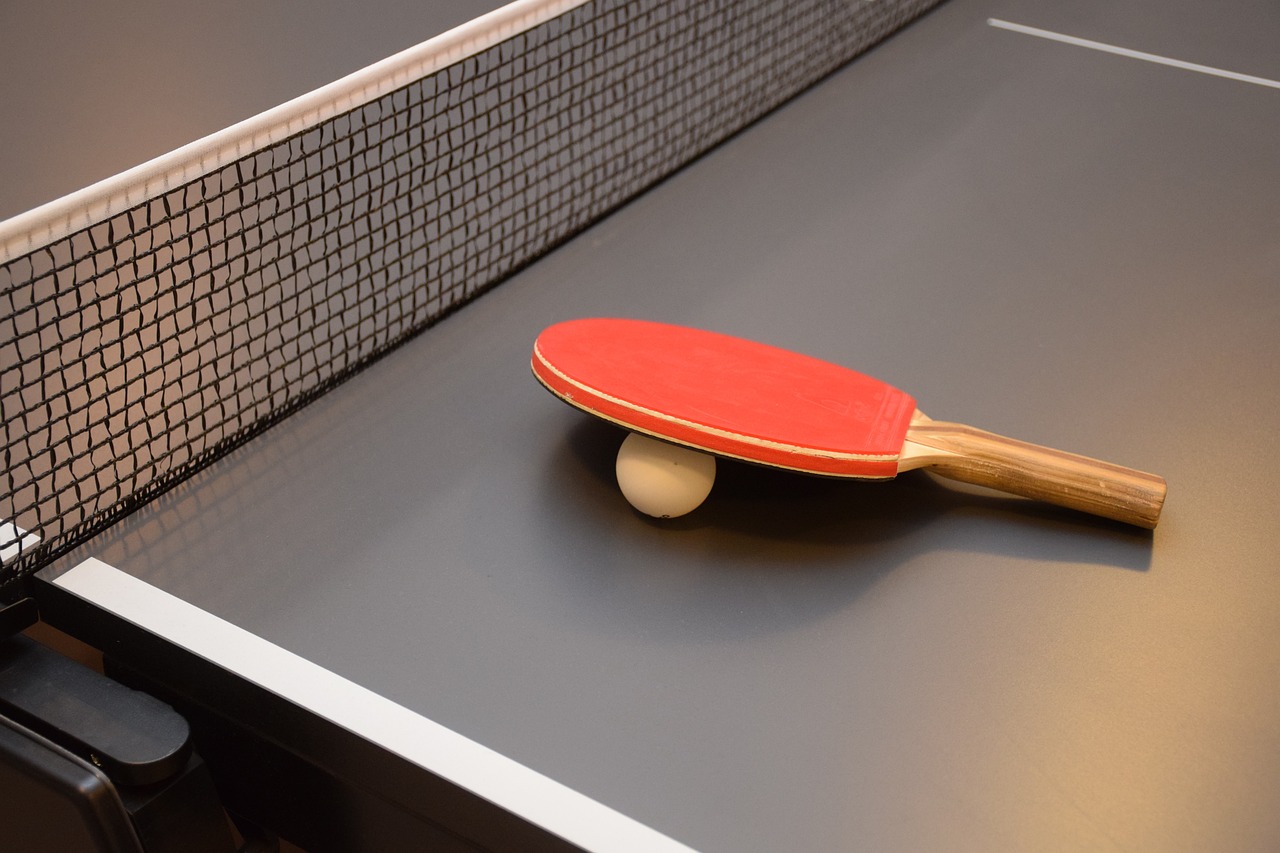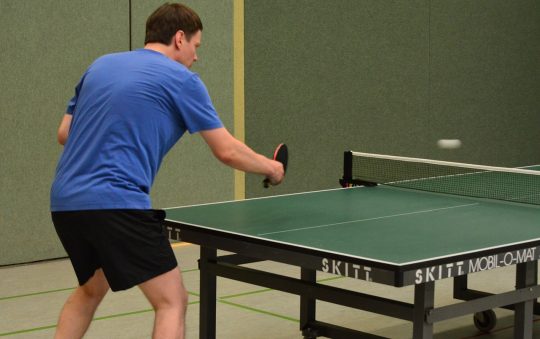Selecting the ideal ping pong table can transform any game room into a lively hub of competition and skill. Whether used for casual play or serious practice, the ping pong table is a staple for enthusiasts and casual players alike. It’s important to consider several key factors to ensure the purchase meets the buyer’s needs. Durability, surface quality, and frame stability are top considerations, alongside the table’s intended use—whether for indoor or outdoor play, practice, or competition.
Size and portability also play crucial roles in the decision-making process. A regulation-size table is a must for those looking to play at a competitive level, but foldable or compact designs might be prioritized by those with limited space. Furthermore, buyers should research the ease of assembly and whether the table includes additional features such as integrated storage for paddles and balls, or adjustable legs for a level playing surface.
Understanding the variety of tables on the market is essential. From entry-level options suitable for family fun to high-end tables designed for professional play, there is a wide range to choose from. It’s not just about the upfront cost but also about investing in a table that will hold up over time and provide a consistent bounce, which is vital for a satisfactory playing experience. Buyers are encouraged to weigh these factors carefully to find a ping pong table that will serve them well for years to come.
Understanding Table Types
When selecting a ping pong table, the type plays a crucial role in the overall playing experience and durability. It’s important to recognize the differences between indoor and outdoor tables, foldable versus stationary designs, and conversion tops to make an informed choice.
Indoor vs Outdoor Tables
Indoor Tables: These tables are designed for a controlled environment and typically have a smoother finish that provides a consistent bounce. They are not resistant to weather and should not be exposed to moisture or sunlight.
- Advantages: Enhanced playability, more options for surface material.
- Disadvantages: Not suitable for outdoor use.
Outdoor Tables: Outfitted with weatherproof materials, such as aluminum composite, outdoor tables can withstand the elements. They often have a rugged surface to prevent warping or water damage.
- Advantages: Weather resistance, longevity.
- Disadvantages: Possibly less consistent bounce compared to indoor models.
Foldable vs Stationary Designs
Foldable Designs:
- Pros:
- Space-saving: Ideal for multi-use spaces.
- Portability: Easier to move and store.
- Cons:
- Stability: Can be less stable than stationary tables.
- Assembly: Typically requires more frequent setup and takedown.
Stationary Designs:
- Pros:
- Durability: Often more robust, with a fixed structure.
- Steadiness: Offers better stability during intense play.
- Cons:
- Space Requirement: Requires dedicated space.
- Immobility: Difficult to relocate once installed.
Conversion Tops
Conversion Tops are a practical solution to transform existing tables, like pool tables, into ping pong surfaces.
- Features:
- Flexibility: Extend the utility of a space without committing to a full table.
- Storage: Slimmer profile for easier storage when not in use.
However, they may not provide the same bounce and feel as a dedicated ping pong table, and it’s essential to ensure the underlying table is the appropriate size and stability to support the conversion top.
Material and Build Quality
When selecting a ping pong table, the material and build quality are crucial for durability and playability. They determine the table’s longevity, resilience, and the quality of bounce during the game.
Tabletop Thickness
A tabletop’s thickness is directly proportional to the quality of play. Standard thickness levels include:
- Less than 15mm: Suitable for casual play; may have an inconsistent bounce.
- 15mm to 18mm: Good for beginner to intermediate players; offers a reliable bounce.
- 19mm to 25mm: Premium segment; used by professionals and serious players for its excellent, even bounce.
Frame Strength
The frame strength is pivotal for the table’s stability and can affect its lifespan. Look for:
- Steel frames: Highly durable and offer better support.
- Frame thickness: At least 30mm thick is recommended for stability.
- Cross-bracing: Additional cross-bracing helps maintain the table’s shape.
Leg Construction
Legs are the backbone of a ping pong table’s stability and level. They should be:
- Leg Thickness: At least 40mm thick to ensure robustness and durability.
- Adjustable Feet: To maintain a level playing surface on uneven ground.
- Leg Levelers: A practical feature for fine-tuning the height and balance.
Size and Space Considerations
When selecting a ping pong table, one must consider the space available and the size of the table to ensure proper fit and adequate play area.
Official Tournament Sizes
Regulation Size: A full-size ping pong table measures 9 feet long, 5 feet wide, and 2.5 feet high. For tournaments, the International Table Tennis Federation (ITTF) specifies these dimensions.
Compact and Mini Tables
Alternate Options:
- Compact Tables often measure around 7 feet by 4 feet.
- Mini Tables can be significantly smaller, with various dimensions, making them suitable for limited spaces and younger players.
Space Required for Play
A comfortable playing area is essential. The recommended space for a full-size table is:
- Length: 22 feet
- Width: 11 feet
This provides players enough room to move and accommodate the full range of strokes.
Additional Features
When selecting a ping pong table, buyers should consider the convenience and functionality that additional features offer. These include the ease of net assembly, storage solutions for balls and paddles, and integrated scoring systems that enhance the playing experience.
Net Assembly
The net assembly process can vary greatly between models. Some tables offer clip-on nets that can be attached and removed swiftly, while others use a screw-type system for a more permanent setup. It is essential to ensure that the net’s tension is adjustable to maintain the correct height and tautness during play.
Ball and Paddle Storage
Many ping pong tables come with built-in storage for balls and paddles, which helps to keep the play area organized and tidy. Look for features like:
- Side racks or compartments for easy access during games.
- Magnetic holders for securing paddles when not in use.
Integrated Scoring Systems
An integrated scoring system adds a layer of convenience for players. These systems can vary from simple manual sliders to more advanced electronic counters. Factors to consider include:
- The visibility of the scoreboard from both ends of the table.
- Ease of resetting scores between games.
Brand and Price Comparison
When selecting a ping pong table, consumers typically consider brand reputation, price points, and the associated warranty and customer service. These factors are crucial in determining the value and lifespan of the investment.
Popular Brands
STIGA and JOOLA stand as industry leaders, renowned for their quality and innovation. The STIGA Advantage series is especially well-regarded for its durability and consistently reliable bounce. Meanwhile, JOOLA offers a range of options like the Inside 15mm Table, appealing to both casual players and serious enthusiasts.
Price Ranges
Ping pong tables range from affordable, entry-level models to high-end, professional-grade tables:
- Entry-Level: Typically priced between $150 and $400, suitable for beginners and recreational use.
- Mid-Range: Generally ranging between $400 and $1,000; these offer better quality and features for serious players.
- Professional Grade: Tables can exceed $1,000, geared towards professional players and official tournaments.
Warranty and Customer Service
Warranty periods and customer service quality can vary significantly:
- Butterfly offers a three-year warranty on most of their tables, which are favored for competitive play.
- Entry-level brands often provide a one-year limited warranty.
- Customer service is a backbone for brands like Killerspin, which offers quick and helpful support, assisting with any assembly or product issues.
Questions & Answers About Owning a Ping Pong Table
- How much space do I need for a ping pong table?
Ideally, you need a space that’s at least 19 feet long and 11 feet wide. This includes the size of a standard table (9 by 5 feet) plus ample room for players to move around. However, if you’re tight on space, you can opt for smaller tables or even conversion tops that fit over existing billiard tables.
- Can ping pong tables be kept outdoors?
Yes, but ensure you get an outdoor-specific table. These are designed to withstand weather elements with waterproof materials and a sturdier build. Remember, indoor tables typically don’t fare well outdoors, as moisture and temperature fluctuations can warp the playing surface.
- How do I maintain my ping pong table to keep it in good condition?
Regular maintenance includes cleaning the surface with a soft, damp cloth to remove dust and spills. Avoid using abrasive cleaners. If it’s an indoor table, keep it away from direct sunlight to prevent warping. For outdoor tables, a cover is recommended to protect against weather and debris when not in use.
- Is it difficult to assemble a ping pong table?
It varies by model. Some tables come almost fully assembled, needing only the net to be attached. Others might require more assembly. Always follow the manufacturer’s instructions, and consider enlisting help, as some parts can be quite heavy and unwieldy.
- What should I consider when buying paddles and balls?
For paddles, consider the grip style (flared, straight, or anatomical), the type of rubber, and the thickness of the sponge. Beginners might prefer a balanced paddle, while advanced players often choose one that enhances spin or speed. As for balls, look for 3-star rated balls for the best playing experience, as they have the most consistent bounce and durability.

